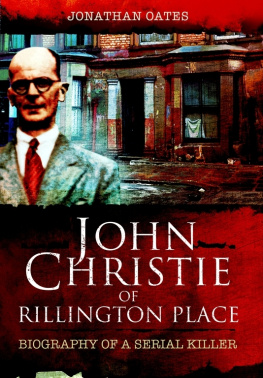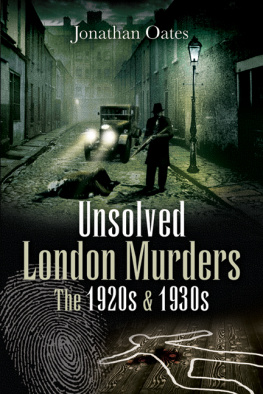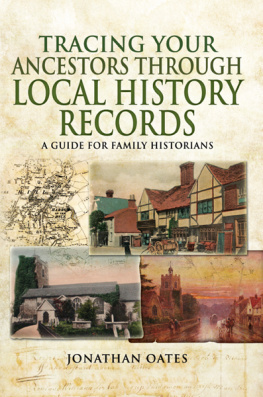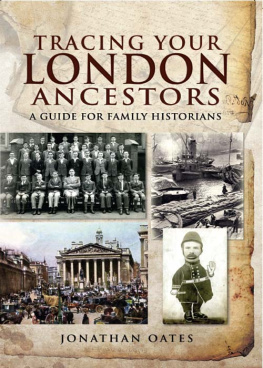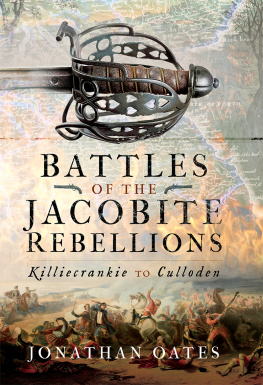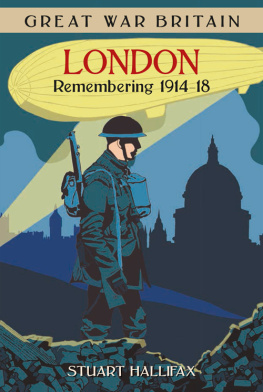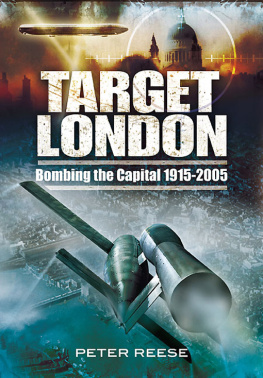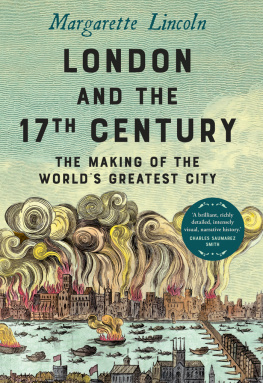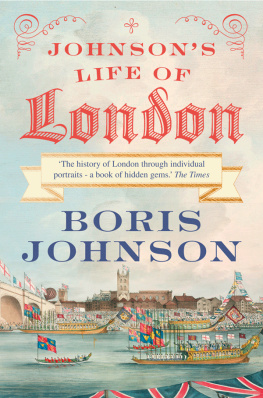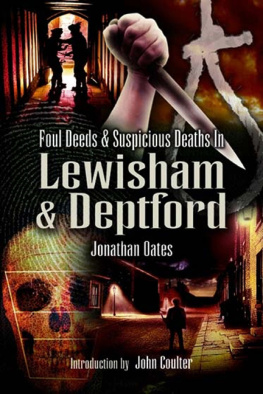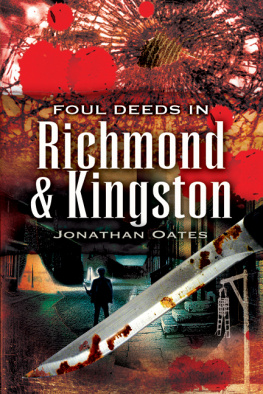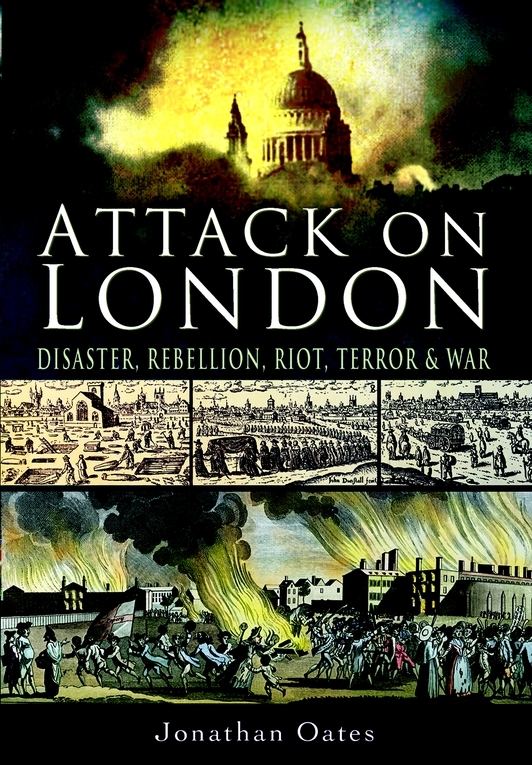I wish to thank all those who have shared their reminiscences of past times with me, and all those who have assisted with my enquiries at several of Londons archives and libraries, principally the Imperial War Museum, the British Library, the British Library Newspaper Library, Westminster City Archives, Wandsworth Libraries and the London Metropolitan Archives. I also wish to thank my wife, who has accompanied me on many of the research visits. Three of the pictures used in this book were reproduced by kind permission of the Museum of London, two by Reg Eden, and one by Paul Lang. Howard Ford allowed me to quote from the diary of Erica Ford. I would also like to thank Dr Robert Woolven, William Bignell, David Marr, Dr David Kynaston, John Coulter, Professor Stephen Taylor and Mrs Sarah Taylor (no relation). This book is dedicated to Sarah.
Further acknowledgements for the use of copyright material go to the following: Mrs Lavina Anson (Diary of Miss Tower); Mr Tony Benn (Diaries); Ealing Local History Centre (Diary of Henry St John); Mr Alan Thomas Goodall (Diary of Mr A.H. Goodall); Mr Allan Goodlet (Diaries of A.K. Goodlet); Mrs Dora Kneebone (Diaries of Rose Uttin); London Metropolitan Archives (Diaries of Anthony Heap); Random House Group Ltd. (Lady Cynthia Asquiths Diaries, 19151918 by Lady Cynthia Asquith, published by Hutchinson); J. Stevens, Not for the Faint Hearted, Wiedenfeld & Nicholson, an imprint of The Orion Publishing Group; Professor John Tulloch (One Day in July); Wandsworth Libraries (Diaries of Florence Turtle); Evelyn Waugh, c/o Penguin Books Ltd. (E. Waugh, A Little Learning); Westminster Archives (Diaries of Joan Pritchard).
Conclusion
Just as Londons population was and remains diverse, whether due to wealth, religion, politics or race, responses to attacks on themselves and their city have also been varied. However, political leaders are often on hand, certainly in the democratic twentieth and twenty-first centuries, to stress how united Londoners are towards any particular crisis. Their comments are usually full of supposedly inspiring words about the bravery of Londoners and their unity; whether it is London can take it of 1940 or Seven million Londoners. One London of 2005.
As we have seen, bravery is only one facet of peoples behaviour. A disaster can bring out the best in people. It is this aspect that is well known and there is little doubting the courage and dedication of rescue workers during the Second World War or in the aftermath of terrorist attacks in subsequent decades. The resolution of Londoners in defending the capital in the sixteenth, seventeenth and eighteenth centuries helped to alter the course of national history.
But disasters can also bring out the worst. In the turmoil of a disaster, some people take advantage of their fellows misfortunes, indulging in pillage and theft, as at Clerkenwell in 1867 or after bombing raids of the Second World War. There is also a tendency to blame others for any disaster and to act on those feelings, however misguided they may be. The Dutch, French and Catholics were seen as the culprits responsible for the Great Fire and were attacked where they were found. Irish workmen were dismissed after the Clerkenwell explosion just over two centuries later and in 2005 some Muslims felt threatened. There was intense hatred towards the Germans in the two world wars, in large part due to the bombing. The myth of the Blitz is also dented when we note the tension that existed between Londoners and their leaders, though most Londoners worked together.
Bravery under attack is not easy. The heroic story of 7 July 2005 or the Second World War shows a population undeterred by bombing. Yet people were afraid. There was panic and there was hysteria. Certainly during the Second World War, the strain that Londoners were put under especially in the later months of the war, when there were frequent missile attacks from which there was no defence was intolerable. This is clear from the diarists and other commentators of the time. During the plague years, many Londoners fled the capital, including doctors.
But of course, there were many instances of quiet heroism. Evelyn remained in London during the plague when he could easily have left with his family to go to his brothers estate. He was sure he had to stay to do his duty. Many less well-known men doctors, clergy and parish officials did likewise. It is possible, of course, to argue that many responses were motivated by self-interest. The individuals who joined the civilian armed bodies raised during the Jacobite crisis of 1745 or the Gordon Riots were perhaps only prepared to serve because they had property or other material or religious interests to defend.
Another point that emerges from these chapters is the number of times that historical arguments have been used to justify a particular position or make comparisons. An early example is Horace Walpole who wrote that he had seen London threatened by riots and a Jacobite army, but insisted that he had never experienced a worse crisis than the rioting of 1780. It was in the twentieth century that such comparisons were more common. Mrs Uttin, during the Blitz, recalled Pepys during the Fire of 1666, and noted that, though he could go to bed after seeing the flames rising, she could not at least, not until the last German plane had gone.
Yet it was not until the terrorist attacks of the 1970s and beyond that Londons history was invoked in this way. Almost always it was used to point out that London and Londoners were resilient and tough enough to withstand the terrorists attacks. This was not just propaganda from newspaper pundits, politicians and police chiefs much of it came from the people themselves.
But such historical comparisons are open to criticism on the grounds that they are simplistic and that the challenges of each age are different to those of previous times. The Blitz was far more devastating than the later terrorist bombings and so was the little-known bombing of the First World War.
It would be foolish to argue that London has not been remarkably capable of recovery and survival over the past two millennia. The many crises have been overcome, though it seemed to some at the time that they might not be. This is because London is so important that it cannot be allowed to fall. London is a place to live, to work, to play, to worship it is a sanctuary and a place of great opportunity and fascination. London is many other things, too a place of great danger and of great loneliness, but its attractions are many. As Dr Samuel Johnson wrote: When a man is tired of London, he is tired of life, for there is in London everything that man can desire.
This survey of the behaviour of Londoners past and present has demonstrated the diversity of their words and actions when faced with deadly dangers. Some acted well, others amiss. The past is not an episode to be repeated, but one to be remembered, if only for the sake of putting the present into context. If we do not remember it, others will misrepresent it. Londons history is as complex as the city in which it has been played out Londoners responses even more so.
Notes
In order to avoid copious footnotes, there is one note for each paragraph in which there is a quotation and in the event of there being more than one, all the sources for these are brought together.
Key
Annual Register (AR)
Bodleian Library (Bod. Lib.)
Calendar of State Papers Domestic (CSPD)
Ealing Gazette (EG)
Gentlemans Magazine (GM)


